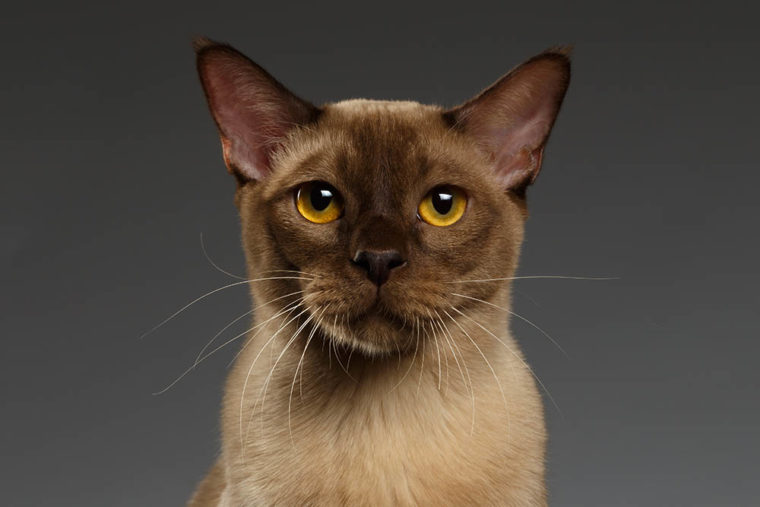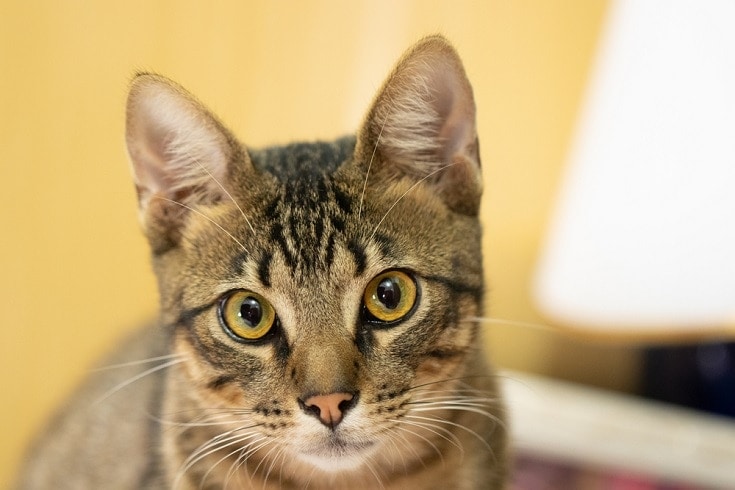
Cats are amazing creatures. The way they can curl up in your lap one minute and then stalk a mouse in the kitchen with amazing stealth and accuracy the next is truly mind blowing. One of the most interesting aspects of a cat is its ears. Yes, cats use their ears for hearing, but there is so much about cats’ ears that owners simply don’t know.
Below, we’re going to take a look at 10 fascinating facts about your cat’s ears. This information will show you just how amazing your cat is and help you to better understand why you should be taking special care of your kitty’s ears.
The 10 Most Fascinating Facts About Your Cat’s Ears
1. Cats have amazing hearing.

You may not want to believe it of your cuddly kitty on the sofa, but cats are born predators. Their hearing is designed to help them with that type of life. Cats have some of the best hearing abilities of any domestic animal. In comparison to dogs, they can catch lower and higher frequencies. Cats can hear a range of frequencies between 48Hz to 85KHz and dogs roughly 40 Hz to 60KHz. This super hearing helps your cat locate sounds, determine different species, and even differentiate between types of noises. This is an excellent tool for alerting them to prey or protecting them from predators.
2. Cats’ ears are quite muscular.
Humans have six muscles in their ears. Cats have a whopping 35. These muscles in your cat’s ears are used to help them locate and catch the sounds they hear. Unlike us, all these muscles give your cat the ability to rotate its ears 180 degrees. No wonder your cat can catch the smallest sound inside the house.
3. The pointed ear shape helps funnel the sound waves.

One thing many cat owners love about their cats is their cute ears. Those little triangles perk up when cats hear noise, but why? It’s because cats use them like a funnel to catch sound waves. Once caught those waves travel to the inner ear to be processed. When you see your cat moving their ears around, they are trying to position them just right so it can hear what’s happening around them.
4. Their ears are essential for balance.
A cat’s ear is structurally similar to the ears of other mammals. Inside their inner ear are the semicircular canals, these are fluid filled tubes. What’s so interesting about this fluid is that it shifts when your cat moves and alerts your cat’s brain of the movement. This fluid and the vestibule, another part inside a cat’s ear that alerts the brain to movement and body position, help a cat maintain its balance so well.
5. Cats’ ears act like a mood ring.

We’ve all found ourselves wishing we knew what kind of mood our cat is in. For cat novices, their ears can tell you a lot. A cat’s ears often act like a mood ring. When the ears go flat, most likely your cat is scared or angry. When they are curious, you may notice them twitching and when forward they are feeling playful or happy. The longer you’re around your cat, you’ll be able to read their moods simply by watching the movement of their ears.
6. The fur around the ears serves an important role.
While the triangle shape and the cute motions of a cat’s ears are adorable, another attribute many owners love is the fur around their cat’s ears. But, did you know this fur has a purpose? We may think it’s cute but the hair around your cat’s ear is working as a protectant against dust and debris. That isn’t its only job, though. The fur around your cat’s ears also helps catch the sound waves your cat needs to hear and distributes it into the ear canal. Unfortunately, hairless cats don’t have this bonus feature. While it doesn’t harm their hearing, the lack of protection from the hair on their ears does leave them more susceptible to ear infections.
7. White cats with blue eyes are often deaf.

Seeing a white cat with blue eyes is a true beauty to behold. Unfortunately, that cat may be deaf. As it turns out, the genetic mutation that gives these cats their astonishing looks can also cause them to suffer from a malformed cochlea. The cochlea is responsible for sending sound signals to your cat’s brain. Statistically, 65% to 85% of white cats with two blue eyes are deaf.
8. Cats aren’t born with their great hearing.
You may not realize this, but cats are actually born deaf. When they are born, a kitten’s ear canal is sealed shut. Over their first week of life, the ear canal will open but that doesn’t mean the amazing hearing is instantly there. No, it takes time, around 6 weeks, for a kitten to perfect its hearing and widen its range.
9. Not all cat ears look the same.

While you may love the traditional triangles, not all cat ears look the same. There are genetic mutations out there that can change the shape of a cat’s ears. You can see curled tips or even folded ears. These different ears are often linked to other cartilage abnormalities and health concerns.
10. Hot ears do not necessarily mean there is a problem.
If you feel your cat’s ears and notice they are hot, don’t think something is wrong. In fact, you may want to step away and leave your kitty alone. As it turns out, when cats get angry, scared, or anxious their adrenaline levels rise. The extra energy then turns to heat and is released through various parts of the body. One of those parts is the ears. You can take this as a warning from time to time.
Conclusion
As you can see, a cat’s ears are a fascinating creation of nature. Not only are they used for hearing, but they help with balance, hunting, and protection from would-be predators. Hopefully, these 10 facts will help you better understand just how important your cat’s ears are to their daily function so you can do your best to help care for them. This will keep your cat a happy hunter and you a proud pet parent.
Featured Image Credit: Seregraff, Shutterstock







